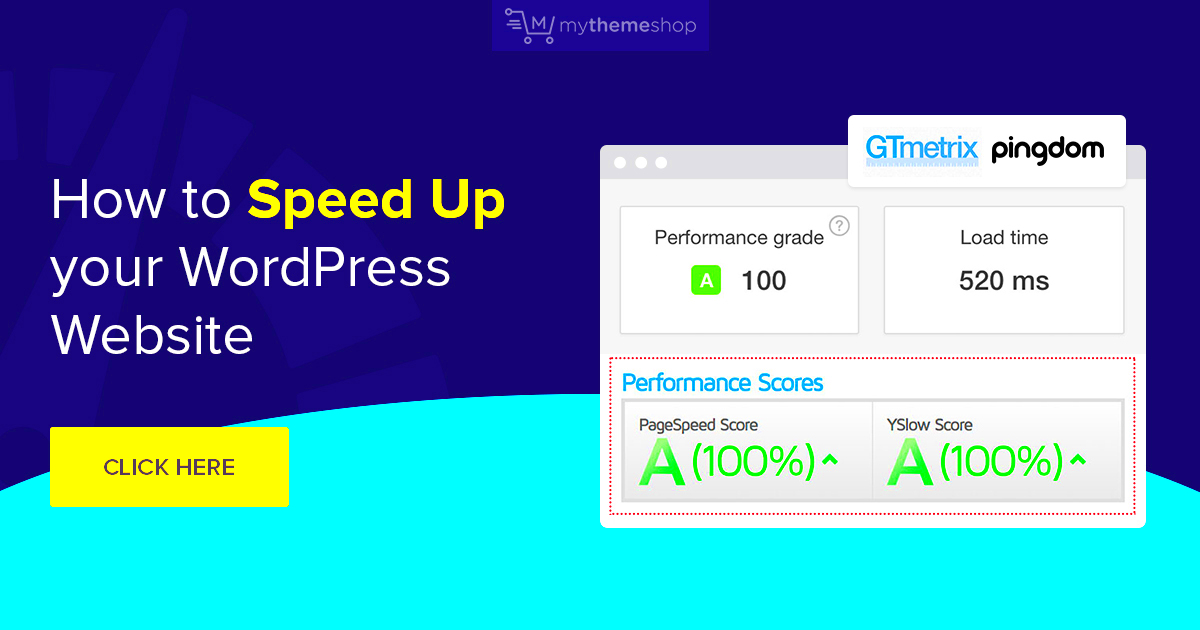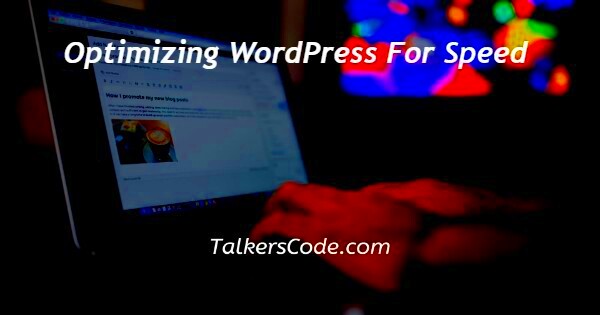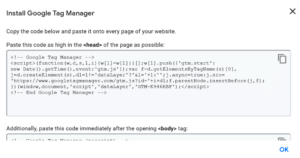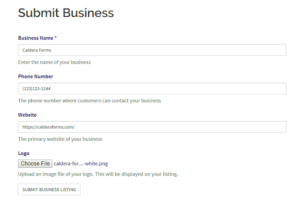In today’s fast-paced digital landscape, a website’s speed is more crucial than ever. For WordPress site owners, optimizing speed isn’t just a luxury—it’s a necessity. A slow-loading site can lead to frustrated visitors, higher bounce rates, and ultimately, lost revenue. In this blog post, we’ll dive into the essential services and tools available to help you supercharge your WordPress site’s performance. Whether you’re a beginner or a seasoned developer, there’s something here for everyone to improve their site’s speed!
Understanding WordPress Speed Optimization

When we talk about WordPress speed optimization, what do we really mean? It refers to the process of enhancing the loading time and performance of your WordPress website. A fast website ensures visitors have a pleasant experience, improves search engine rankings, and boosts your overall online presence. Here are some key elements involved in
- Image Optimization: Large images can significantly slow down your site. Using image editing tools or plugins to compress images without losing quality is essential.
- Minification: This involves reducing the size of your CSS, HTML, and JavaScript files to speed up loading times. Minifying these files removes unnecessary spaces, comments, and other redundant elements.
- Caching: Caching stores a version of your website so that users don’t have to reload the entire page every time. Caching plugins can make this process simple and effective.
- Content Delivery Network (CDN): CDNs distribute your site across various servers worldwide. This means that users will load your site from the nearest server, resulting in faster access times.
- Database Optimization: Over time, your WordPress database can become cluttered with unnecessary data. Regular optimization ensures that your database only contains the essential information.
By understanding these core concepts, you’ll be well on your way to successfully optimizing your WordPress site for speed. Remember, every little tweak counts, and the performance gains can be remarkable!
Importance of Website Speed
When it comes to your WordPress site, speed is everything. Imagine you’ve just clicked on a link to your favorite blog, but instead of a fast-loading article, you’re greeted by a blank screen or a spinning wheel. Frustrating, right? That’s not just a minor nuisance; it can have a significant impact on both user experience and your bottom line.
Fast-loading websites create a smoother experience for users. The quicker your site loads, the more likely visitors are to stick around, read your content, and engage. In fact, studies show that even a one-second delay in loading time can lead to a:
- 7% decrease in conversions
- 11% drop in page views
- 16% reduction in customer satisfaction
These statistics are alarming, especially for businesses that heavily rely on their online presence. Think about it: if your site isn’t fast, users will bounce to your competitors without a second thought.
In addition to user experience, search engines like Google rank websites partly based on their loading speed. A faster site can lead to a better search engine ranking, meaning more organic traffic. This is crucial if you want to increase your visibility online.
In summary, optimizing for speed isn’t just a nice-to-have; it’s a fundamental aspect of running a successful WordPress site. Faster websites keep visitors happy, boost your search engine ranking, and ultimately enhance your chances of converting that traffic into loyal customers.
Key Factors Affecting WordPress Speed
Understanding the key factors that affect your WordPress site’s speed is the first step toward making meaningful improvements. Here are some crucial aspects to consider:
| Factor | Description |
|---|---|
| Hosting Environment | Your web host plays a pivotal role. Shared hosting can slow down your site due to resource limitations. |
| Image Optimization | Large image files can drag your site’s performance down. Always compress and resize images for the web. |
| Plugin Quality | Not all plugins are created equal. Some may bloat your site or introduce unnecessary code, slowing it down. |
| JavaScript and CSS Files | Bloat from unminified scripts can impact loading times. Optimize these files to enhance speed. |
| Database Optimization | A cluttered database with unused data can slow your site. Regularly clean it up to improve performance. |
Each of these factors has weight in the overall speed equation. Addressing them can lead to noticeable improvements in your site performance. Whether it’s selecting a reliable hosting provider, optimizing images, or cleaning up your database, focusing on these key factors can give your WordPress site the speed it needs to thrive in a competitive landscape.
Essential Speed Optimization Services
When it comes to optimizing your WordPress site for speed, using specialized services can make all the difference. Here are some essential services that can help you supercharge your website’s performance:
- Content Delivery Network (CDN): A CDN distributes your site’s content across multiple servers worldwide, ensuring that users receive data from the server closest to them. This drastically reduces load times, especially for global audiences.
- Managed Hosting: Opting for managed WordPress hosting services can significantly enhance your website speed. Providers like WP Engine or SiteGround specialize in WordPress optimization, offering server configurations tailored for performance.
- Caching Solutions: Implementing caching solutions like WP Rocket or W3 Total Cache can store static versions of your pages, which means your server doesn’t have to generate the same data repeatedly, leading to faster load times.
- Image Optimization: Large images can slow down your site significantly. Services like ShortPixel or Imagify compress your images without losing quality, ensuring your pages load faster.
- Minification Services: Minifying your CSS, JavaScript, and HTML files removes unnecessary characters and spaces, reducing file size. Services such as Autoptimize offer easy-to-integrate solutions.
- Performance Audits: A thorough performance audit can help identify bottlenecks in your website’s speed. Companies like GoWP provide professional assessments and tailored solutions to enhance performance.
Using these services can not only boost your speed but also enhance user experience, reduce bounce rates, and potentially improve your search engine ranking. The investment in these services is often outweighed by the benefits of a faster site.
Top Tools for Speed Testing
Speed testing your WordPress site regularly is key to understanding how well it’s performing. Here are some top-notch tools that can help you monitor and analyze your site’s speed:
| Tool Name | Features | Cost |
|---|---|---|
| Google PageSpeed Insights | Analyzes content and provides suggestions to make your site faster. | Free |
| GTmetrix | Offers detailed reports on speed, including page load times, and provides recommendations. | Free; paid plans available for advanced features |
| Pingdom | Allows you to test from different locations and provides performance grades. | Free trial; paid plans available |
| WebPageTest | Advanced testing with multiple browser options and configurations. | Free |
| Load Impact | Tests how your website performs under load, simulating multiple users. | Paid; offers free basic tests |
Utilizing these tools on a regular basis will help you stay informed about your site’s performance and pinpoint areas that need improvement. Remember, a faster site not only enhances user satisfaction but is also favored by search engines!
Plugins for Boosting WordPress Speed
When it comes to enhancing the speed of your WordPress site, plugins are like the Swiss Army knives of performance optimization. There are several fantastic plugins available that can help you accelerate your site without diving deep into coding. Let’s take a look at some of the most effective ones:
- WP Rocket: A premium caching plugin that improves load time by creating static HTML files and reducing server requests.
- W3 Total Cache: This free plugin enhances your site’s performance by caching pages and posts, reducing download times and improving server throughput.
- Autoptimize: It optimizes your site’s HTML, CSS, and JavaScript code by minifying files and aggregating them, which can significantly speed up page load times.
- Smush: This image optimization plugin compresses images without losing quality, contributing to faster loading times.
- Asset CleanUp: A handy tool that allows you to selectively disable or delay loading of unnecessary scripts and styles on a per-page basis.
Choosing the right plugins for your site is crucial. Be sure to read reviews and understand how each plugin works. It’s also essential to avoid overloading your site with too many plugins, as they can actually slow down performance if not managed properly. Integrate them wisely and watch your site transform into a speed machine!
Best Practices for Image Optimization
Images can significantly impact your website’s load times, and optimizing them is critical for a speedy experience. So, how can you get all those pixel-perfect visuals to play nice with your loading times? Let’s break down some best practices for image optimization that every WordPress user should embrace:
- Choose the Right Format: Use JPEG for photographs, PNG for graphics with transparency, and SVG for logos and icons. Each format has its strengths and weaknesses, so select wisely.
- Compress Images: Use tools like ShortPixel or ImageOptim to compress images before uploading them. This reduces file size while maintaining quality.
- Use Responsive Images: WordPress automatically creates different sizes of your images, but you should also use the
srcsetattribute to serve the appropriate image size based on the user’s device. - Lazy Loading: Implement lazy loading with plugins like A3 Lazy Load so images load only when they appear in the viewport, improving initial loading times.
- CDN Usage: Consider using a Content Delivery Network (CDN) like Cloudflare or MaxCDN to serve image content faster from the closest geographical location to the user.
By implementing these best practices, you not only improve your website’s speed but also enhance user experience—encouraging visitors to stay longer and engage more with your content. Remember, a faster site is a happier site!
Caching Strategies for WordPress
When it comes to optimizing your WordPress site for speed, implementing effective caching strategies is a game changer. Caching essentially stores a static version of your website, helping to minimize server requests and data processing. This means faster loading times, which can enhance user experience and improve SEO rankings!
Here are some key caching strategies to consider:
- Page Caching: This involves storing the HTML output of your pages and serving that to users instead of querying the database every time a page is loaded. Plugins like WP Super Cache or W3 Total Cache can automate this process.
- Browser Caching: Set your browser to remember certain elements of your website, so repeat visitors can load your site faster. Configure headers through .htaccess or use plugins to handle this efficiently.
- Opcode Caching: This caches the compiled versions of PHP scripts to reduce the server’s workload. Services like OPcache can be used for this purpose, making your site respond quicker.
- Object Caching: If your website uses a lot of dynamic data, object caching keeps frequently requested database objects in memory for fast retrieval. Consider using Redis or Memcached for this.
By employing these caching strategies, you not only enhance speed but also save server resources. Remember, a faster website leads to happier users, which is ultimately what we all want!
Minifying CSS, JavaScript, and HTML
Another crucial step in boosting your WordPress site’s loading speed is to minimize your code. Think of it like decluttering a room: by removing unnecessary elements, you create a cleaner, more functional space. Minification compresses your CSS, JavaScript, and HTML files by removing spaces, comments, and other extraneous characters, making the files smaller and easier for browsers to load.
Here’s how you can effectively minify your site’s assets:
- Use a Plugin: There are many WordPress plugins like Autoptimize and WP Rocket that can automate the minification process for you. They combine and compress files with just a few clicks!
- Manual Minification: If you prefer a hands-on approach, you can use online tools like CSSNano for CSS, UglifyJS for JavaScript, and HTMLMinifier for HTML. Just be sure to backup your site before you start fiddling with the code!
Additionally, should you choose to manually minify your code, testing it in a staging environment before applying to your live site is highly recommended. This way, you can avoid any conflicts or issues that may arise.
Minifying your files may seem like a small tweak, but it can significantly enhance your overall site performance, leading to quicker load times and better user satisfaction!
Content Delivery Networks (CDNs)
When it comes to optimizing your WordPress site for speed, using a Content Delivery Network, or CDN, can be a game changer. But what exactly is a CDN? Simply put, a CDN is a network of servers located around the world that work together to deliver your website’s content to users more efficiently. Instead of serving all your site’s data from a single server, a CDN caches your content and serves it from the location that’s closest to your visitors. This reduces latency and improves load times.
Here’s why you might want to consider using a CDN:
- Improved Load Times: With a CDN, your website loads faster for users, especially those who are geographically distant from your main server.
- Reduced Server Load: By offloading traffic to a CDN, your main server bears less stress, which can lead to better performance overall.
- Increased Reliability: CDNs distribute your content across multiple servers, so if one goes down, others can take over without a hitch.
- Enhanced Security: Many CDNs offer protection against DDoS attacks and provide a layer of security for your website.
Some popular CDNs you might want to consider include:
| CDN Provider | Key Features |
|---|---|
| Cloudflare | Free plan available, DDoS protection, SSL support |
| Akamai | Robust security features, global presence |
| Amazon CloudFront | Pay-as-you-go pricing, integrated with AWS |
| KeyCDN | User-friendly dashboard, competitive pricing |
In summary, a CDN could be a vital tool in your speed optimization toolkit. By distributing your site’s content across various servers, you not only enhance user experience but also improve your site’s overall performance.
Choosing the Right Hosting Provider
The hosting provider you select plays a crucial role in the speed and performance of your WordPress site. This is because your website’s resources are stored on the server provided by your hosting service, and if it’s not up to par, it can severely affect load times and overall user experience. So, how do you choose the right hosting provider?
Here are some key factors to consider:
- Type of Hosting: Decide whether you need shared hosting, VPS, or dedicated hosting based on your site’s needs and budget.
- Performance: Look for hosting providers with a strong track record of speed. Check their uptime guarantees, typically 99.9% or higher is ideal.
- Support: Reliable support is non-negotiable. Opt for hosts that provide 24/7 support through various channels, like chat or phone.
- Scalability: As your website grows, you may need more resources. Choosing a provider that offers easy upgrades can save you headaches later.
- Security Features: Make sure the host provides robust security measures such as SSL certificates, firewalls, and regular backups.
- Cost: While cheaper options might be tempting, they often come with compromises in terms of performance. Invest wisely!
Some hosting providers renowned for their speed and reliability include:
| Hosting Provider | Key Features |
|---|---|
| SiteGround | Excellent customer support, free daily backups, super-fast servers |
| Bluehost | Official WordPress recommended host, 24/7 support, easy setup |
| WP Engine | Managed WordPress hosting, automatic updates, staging environment |
| HostGator | Affordable plans, one-click WordPress installation, reliable uptime |
In summary, choosing the right hosting provider is fundamental to the speed and efficiency of your WordPress site. Keep your goals and budget in mind, and take your time to research before making a decision.
Regular Maintenance for Continued Performance
When it comes to keeping your WordPress site running smoothly, regular maintenance is key. Think of your website like a car; without regular check-ups and tune-ups, it can quickly become sluggish and problematic. Here are several essential maintenance tasks that will help ensure your site’s performance stays top-notch:
- Update Everything: Always keep your WordPress core, themes, and plugins up to date. Each update often includes performance improvements and security patches that can significantly impact your speed and reliability.
- Optimize Your Database: Over time, your database may accumulate unnecessary data, such as spam comments, revisions, and transients. Use tools like WP-Optimize to clean up your database regularly.
- Monitor Site Speed: Tools like Google PageSpeed Insights or GTmetrix can provide insights into your site’s performance. Regularly testing your speed allows you to identify issues before they become bigger problems.
- Check for Broken Links: Broken links can hinder user navigation and affect SEO. Use a plugin like Broken Link Checker to find and fix any dead links.
- Backup Your Site: Regular backups are essential for recovery in case something goes wrong, like a site crash or a security breach. Tools like UpdraftPlus can automate this process for you.
- Review Hosting Performance: Your hosting provider greatly affects your site’s speed. Periodically evaluating their performance can help you decide if it’s time to switch to a more optimized solution.
By incorporating these maintenance tasks into your routine, you’ll not only enhance your site’s speed but also improve its overall reliability and user experience.
Conclusion
Optimizing WordPress for speed is not just a one-time task; it’s an ongoing process that requires attention and care. The blend of the right tools and services is essential for a well-performing site. You’ve got a plethora of options at your disposal—from caching plugins and CDNs to performance monitoring metrics and regular maintenance routines.
Remember, a fast-loading website provides a better user experience, boosts your site’s SEO, and generally keeps visitors happy. As part of your optimization strategy, consider the following:
- Choose Lightweight Themes: Select themes that are optimized for speed and performance from the get-go.
- Utilize Compression: Enable GZIP compression to reduce the size of your files, which leads to quicker load times.
- Limit External Scripts: Too many external fonts and scripts can also slow down your site, so use them wisely.
In conclusion, the pursuit of speed should never be overlooked. Regular maintenance, along with effective tools and strategies, will contribute significantly to the continued performance of your WordPress site. With unwavering dedication to these practices, you’re well on your way to achieving a fast, reliable, and user-friendly website.



